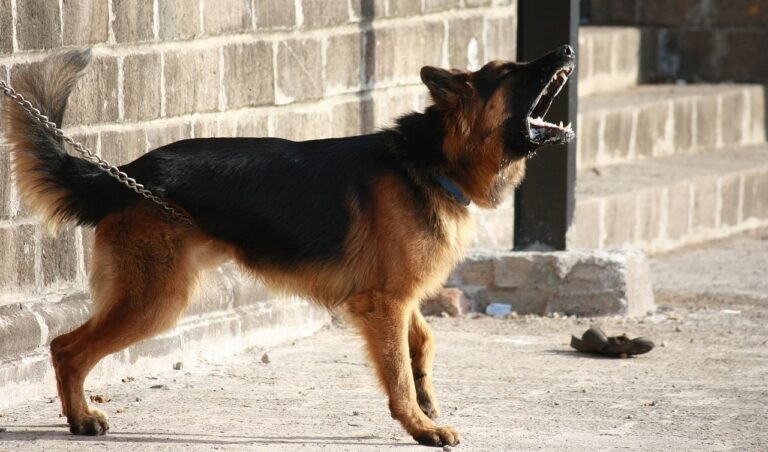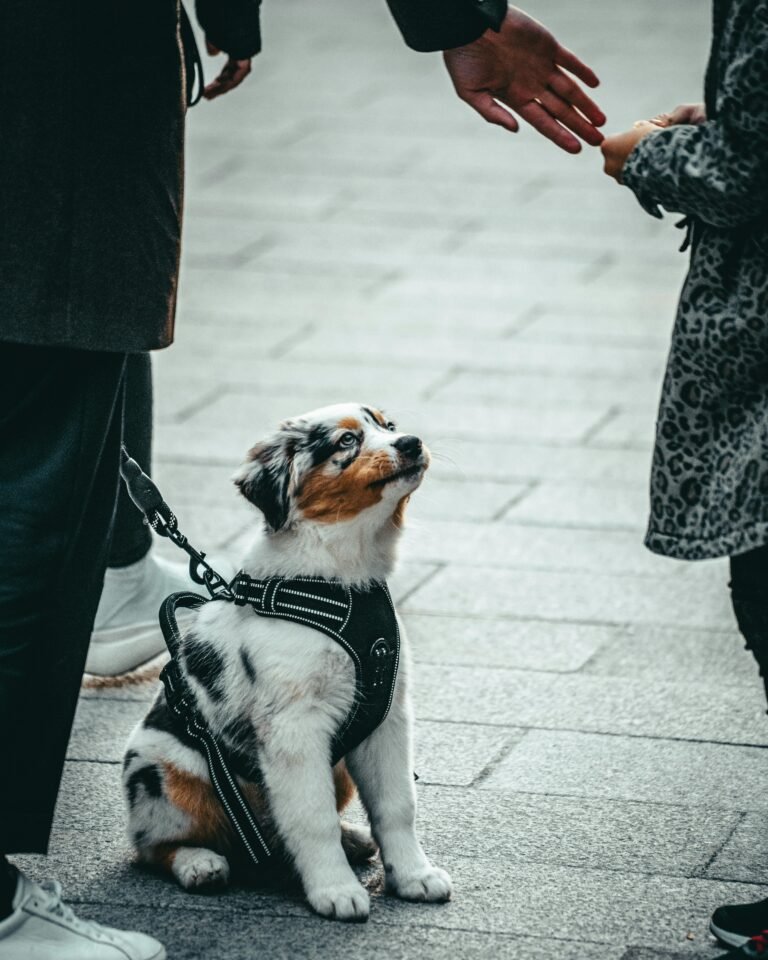Introduction
Having a reliable recall – getting your dog to come to you promptly when called – is one of the most important skills you can teach your dog. A strong recall keeps your dog safe, gives them more freedom, and strengthens the bond you share. Whether you’re at the park, hiking on a trail, or simply playing in your backyard, the ability to bring your dog back to you quickly can prevent accidents and allows both of you to enjoy activities with confidence. In this guide, we’ll outline why recall training matters and provide a step-by-step approach to mastering this essential cue.
Why Recall Training Is Important
A dependable recall is more than just convenient – it can be lifesaving. Here are a few reasons to invest time in teaching your dog to come when called:
- Safety: A dog that comes when called can be stopped from running into traffic, approaching an unfriendly animal, or getting into hazardous situations.
- Freedom: Dogs with a solid recall can enjoy more off-leash time on trails, at dog parks, and during play sessions because you know they will return when needed.
- Stronger Bond: Regular training sessions build trust and communication between you and your dog. Recall training reinforces your role as a positive leader.
- Better Manners: Teaching a recall encourages attentiveness and responsiveness, which carry over into other areas of training.
Preparing for Recall Success
Before you start recall training, set yourself up for success:
- Choose a Distinct Cue: Pick a word like “come” or “here” and avoid using it for anything negative. Be consistent with your chosen cue.
- Use High-Value Rewards: Have a stash of treats, toys, or praise that your dog absolutely loves. The higher the value, the more motivated your dog will be to respond.
- Minimize Distractions: Begin training in a quiet, controlled environment such as your living room or fenced yard before moving to more challenging locations.
- Keep Sessions Short and Positive: Dogs learn best during brief, frequent training sessions. Aim for 5–10 minutes per session to keep your dog engaged.
- Utilize a Long Line: A long leash or training line allows your dog some freedom while still giving you control during the early stages of outdoor training.
These preparations ensure that your dog associates the recall cue with positive outcomes and sets the foundation for reliable behavior.
Step-by-Step Recall Training
With your supplies ready, follow these steps to teach your dog to come when called:
- Condition the Cue: Start by saying your chosen recall word in a happy tone when your dog is already moving toward you. As soon as they reach you, offer a high-value reward and lots of praise. Repeat this several times so your dog learns that coming to you results in good things.
- Add Distance: Once your dog understands the cue, create a bit of distance by stepping back a few feet. Call their name followed by the recall word. When your dog comes, reward generously. Gradually increase the distance as your dog becomes more consistent.
- Introduce Mild Distractions: Practice in your yard or a quiet park. Keep your dog on a long line to prevent them from running off. Call them when they’re mildly distracted, such as sniffing the grass. If they respond, reward. If not, gently reel them in with the line and reward them once they reach you. This reinforces that coming to you is always rewarding.
- Practice Randomly: Mix recall practice into playtime. Call your dog intermittently during fetch or tug and reward them for returning. Then send them back to play. This teaches your dog that coming when called doesn’t mean the fun ends.
- Avoid Punishment: Never scold or punish your dog when they come to you, even if you’re frustrated that it took them a while. Coming to you should always be safe and rewarding; otherwise, your dog may hesitate next time.
- Gradual Progression: Increase the level of distractions slowly. Move from your yard to a quiet park, then to busier areas. Don’t rush the process. If your dog struggles, return to an easier environment and build up again.
Consistency is key. Repeat these steps daily, and celebrate small successes.
Proofing Recall in Different Environments
Dogs don’t generalize behaviors easily; they need practice in various contexts to truly learn a cue. To make your recall rock-solid, work on proofing:
- Change Locations: Practice in different rooms, backyards, friends’ yards, dog-friendly stores, and parks. Each new environment reinforces that the recall cue applies everywhere.
- Vary Distractions: Gradually expose your dog to more challenging distractions like other dogs, people, squirrels, or food on the ground. Keep them on a long line until you’re confident in their response.
- Alter Rewards: Sometimes use treats, other times use toys or games. This unpredictability keeps your dog excited about responding.
- Adjust Distance: Work on recalls from various distances, from a few feet away to across a field. Varying distance builds reliability.
- Incorporate Different Surfaces: Practice on grass, sand, gravel, and indoors. Dogs can associate cues with surfaces, so changing footing helps generalize the behavior.
By systematically exposing your dog to new scenarios, you strengthen their understanding and response to the recall cue.
Troubleshooting Common Recall Challenges
If your dog isn’t responding as you’d like, consider these common issues and solutions:
- Using the Cue Too Casually: Don’t overuse your recall cue or use it for things your dog finds unpleasant (like nail trims). This can erode its value. Reserve it for important situations and always reward handsomely.
- Competing Motivations: If something more exciting is nearby, your dog might ignore you. Increase the value of your rewards and practice around distractions gradually.
- Inconsistent Training: Infrequent practice leads to weak responses. Incorporate recall exercises into daily routines.
- Negative Associations: If your dog gets punished after coming to you (for example, you call them to end playtime and immediately leash them), they may hesitate. Pair recalls with continued rewards and fun activities.
- Lack of Practice in New Places: A dog may respond well at home but not in a new environment. Proofing in different locations is essential for a reliable recall.
Patience and a positive attitude help overcome these hurdles.
Advanced Recall Skills and Games
Once your dog’s basic recall is solid, you can strengthen it further and keep training fun:
- Emergency Recall: Teach a special cue reserved for urgent situations (e.g., “NOW!”) using extremely high-value rewards. Practice sparingly so it retains its power.
- Whistle Recall: A whistle carries farther than your voice. Pair a specific whistle pattern with tasty treats just as you would with a verbal cue.
- Hide and Seek: Have family members take turns hiding and calling your dog. This game makes coming when called exciting and rewarding.
- Round Robin Recalls: In a group setting, people stand in a circle and call the dog randomly. This builds responsiveness to multiple voices and increases focus.
- Recall from Play: Call your dog away from a favorite toy or playmate, reward them, then release them back to play. This reinforces that responding doesn’t end the fun.
Keeping training varied and engaging ensures your dog stays enthusiastic about recall.
Safety Considerations
Even with a great recall, safety should always be top of mind:
- Use Leashes Where Required: Abide by leash laws and only allow off-leash play in designated areas once your dog has a consistent recall.
- Be Aware of the Environment: Don’t practice recall near busy roads or hazards. Always scan for potential dangers before calling your dog off-leash.
- Don’t Set Them Up to Fail: Avoid situations you know are too tempting for your dog until their recall is stronger. Build up to those challenges gradually.
- Carry Identification: Ensure your dog always wears identification tags or is microchipped, even if you’re confident in their recall.
By taking precautions, you protect your dog and others while building freedom through training.
Conclusion
Teaching your dog to come when called is an investment in their safety and your peace of mind. Through positive reinforcement, patience, and consistent practice, you can develop a recall that works reliably in a variety of situations. Start in low-distraction environments, make coming to you the best part of your dog’s day, and gradually raise the difficulty. With time, your dog will view the recall cue as an invitation to something wonderful, and you’ll enjoy the freedom and trust that a dependable recall brings.






